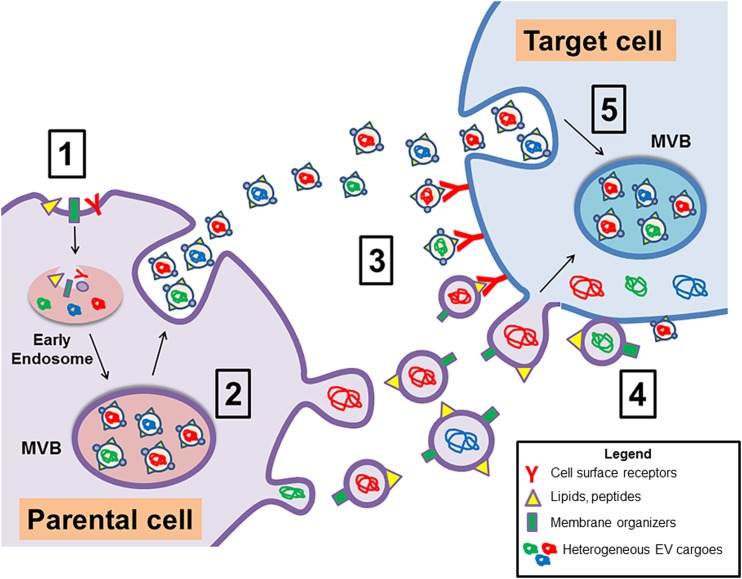Figure 1.
Mechanisms of EV release and cargo transfer to target cells. The schematic depicts the formation and mechanisms of secretion of exosomes and microvesicles (apoptotic bodies are not shown). (1) Exosomes are formed through the inward reverse budding of the limiting membrane and subsequent fusion to the early endosome. The early endosome fuses to the MVB, which is the site for newly formed exosomes. (2) The MVB will fuse to the plasma membrane and release the exosomes to target a recipient cell, whereas microvesicles will bleb off of the plasma membrane. (3) Once secreted into systemic circulation or interstitial fluid, EVs can interact with a target cell through multiple mechanisms. EV surface ligands can directly interact with cell surface membrane receptors to activate cell signaling pathways; (4) direct fusion of EVs with the plasma membrane to release cargoes into the cytosol; (5) or through mechanisms of endocytosis such as clathrin-mediated endocytosis, caveolin-dependent endocytosis, macropinocytosis, and phagocytosis.

